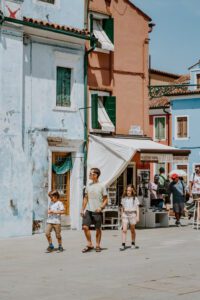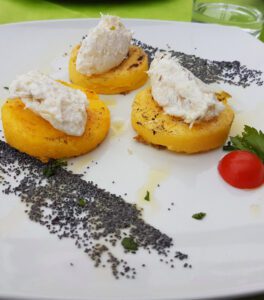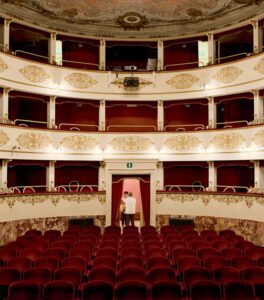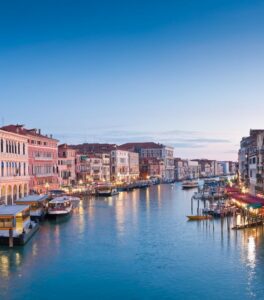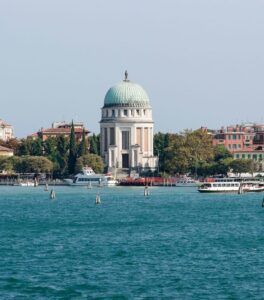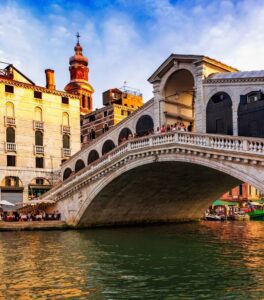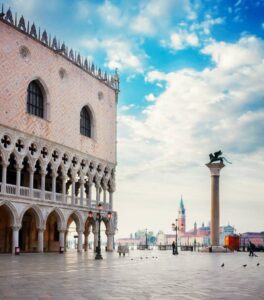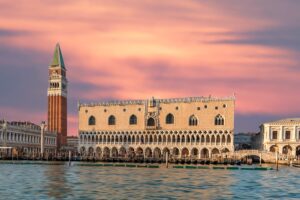
The Doge’s Palace in Venice is a treasure trove of history, culture and charm, but to visit each of its rooms with the attention it deserves, a week would not be enough.
If we think of how many doges it has hosted, how many scandals and how many death sentences have been pronounced from its two pink colours on the loggia, and again how many illustrious guests it has received or how many secret and commercial missions have been decided within these walls, it seems impossible to think of visiting it in just a couple of hours. But we are perfectly aware that often visitors have only 2 or 3 days to visit our wonderful city and one has to know how to optimise his time here.
Our guests often ask us what to see in the Doge’s Palace – one of the 5 museums we recommend not to miss during your stay – and that’s why we thought we’d also share with you some tips for making the most of your visit to one of Venice’s most iconic places.
The inner courtyard
Once you pass the ticket office, you will be greeted by a majestic inner courtyard. Two things will strike you for sure: the magnificent Scala dei Giganti, the ancient honour entrance with its two large statues representing Mars and Neptune, sculpted by Sansovino, and the Marco facade with a clock, which hides behind it the domes of St Mark’s Basilica, once the doge’s private chapel.
In this courtyard, there are also two wells, dating back to the mid-16th century. At the time, this space was open to the public and citizens could freely use the water collected from these wells.
From here we access the Censors’ Staircase, from which the visit to the Doge’s Palace begins, leading us to the incredible Golden Staircase.
The Golden Staircase
This staircase will leave you open-mouthed, with its stucco and gilding accompanying the visitor to the Doge’s Apartments and then to the government rooms.
Construction of the staircase began in 1555 designed by Jacopo Sansovino, but the stucco work is dated later. The decorations all have a propagandistic and political significance, a sort of calling card for the illustrious visitors of the time.
The Hall of the Maggior Consiglio and the drape covering the traitor doge
Surely this is the most famous room of all, especially for Tintoretto’s Paradise, 25 metres wide and 7 metres high. A colossal work that takes your breath away.
This room is astonishing for its width and for its lack of columns, which is entirely intentional. The main reason why the Doge’s Palace came into being was that a room suitable for the main sessions of the Venetian aristocracy was needed. It was here, in fact, that the highest offices in the Veneto were voted.
Bridge of Sighs
To reach the Prigioni Nuove building, across the canal, one crosses the famous Bridge of Sighs, a two-lane fortified passageway.
The bridge was built in the early 1600s, but the name by which it is known throughout the world is due to Lord Byron – or so it is rumoured.
Palace of the New Prisons
Not to be missed in the Doge’s Palace is the Palazzo delle Prigioni Nuove, the first building in history to be constructed for housing prisons.
Casanova, however, did not escape from here, but from the Piombi, the prisons under the roof of the Doge’s Palace.
